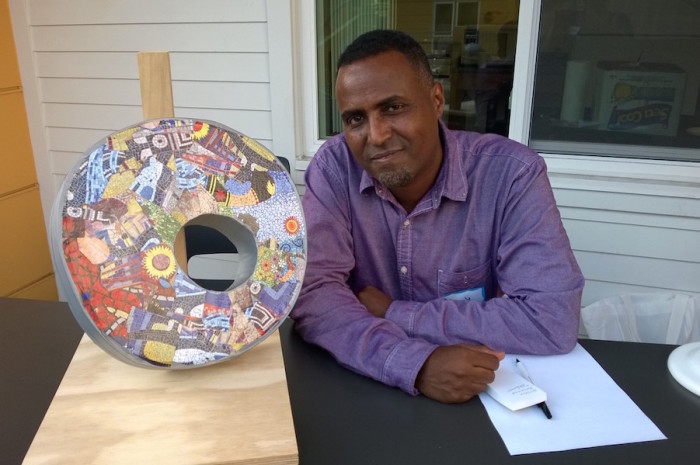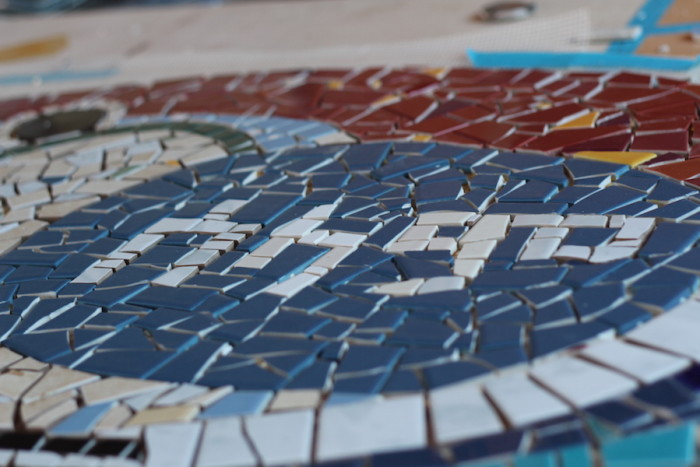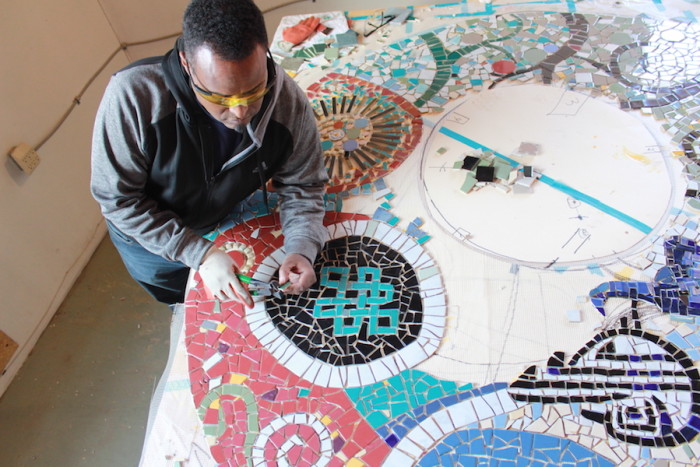As developers demolish the old Yesler Terrace, it’s hard not to feel a sense of loss. As of now, about half of the 561 low-income housing units of the Seattle Housing Authority (SHA) development have been torn down. Residents have moved out to make way for mixed-income apartments split between SHA and Vulcan.
Community members have expressed fear that the neighborhood’s multicultural soul will be lost in the shuffle.
But Seattle-based artist Yegizaw “Yeggy” Michael believes that public art can help preserve the spirit of Yesler Terrace.
An Ethiopia-born Eritrean artist, Michael was chosen by SHA to create a public art installation at Kebero Court, the first apartment community to open in the new development.
“I wanted to use the opportunity to create a permanent structure that would continue to tell the story of the community,” said Michael.
The seven-foot tall mosaic sculpture entitled “Harmony” is set to be unveiled with a ribbon-cutting ceremony on Dec. 16 on the corner of Boren Avenue and Yesler Way.
About 60 households from the old Yesler Terrace have moved into Kebero Court. To develop the design for the piece, Michael conducted a series of interviews with Kebero Court residents to learn what they wanted to see in their new neighborhood.

At workshops and community events, he met residents of many different backgrounds, including East African, Filipino, African-American and Native American. The common message was one of peace, beauty, togetherness and caring. Those concepts were woven into his final mosaic design.
“Harmony” depicts an interweaving of several cultural symbols from eight parts of the world within the large circular frame. The carabao, an animal akin to a water buffalo, is a Filipino symbol of hard work and strength. Here it sits next to Sankofa, a West African symbol of a bird looking looking over its shoulder. Sankofa in the African-American community represents the idea that one must understand the past in order to move forward. In an interesting marriage of concepts, Michael depicts the Sankofa bird in Native American totem styling. It’s the only symbol in the mosaic to combine two cultures rather than give each its own symbol.
The concepts of legacy and neighborhood pride have even been built directly into the materials of “Harmony.” The wooden base of the sculpture was salvaged from a large tree in part of the old Yesler that has already been demolished. It’s one more way that Michael hopes to honor the past as the neighborhood continues to change.
“This community is going to change tomorrow; it’s not the same as it was 50 years ago and it won’t be the same 50 years from now,” said Michael. “Public art will tell the story of the people who are here right now, and carry that story into the future for everyone to see.”
Yeggy Michael was born in Ethiopia from an Eritrean family, and spent time in Kenya, Eritrea, Austria, New York City, and Chicago, before settling in Seattle in 2001. He said he’s addicted to learning about different cultures. And while he’s learned the nuances of each place he’s visited, he believes they’re mostly just decoration on top of our common needs and desires.
“The underlying concept of being human is the same everywhere I go,” he said. “People want to raise their families, be happy, share their cultures and contribute to their community.”

Other public works by Yeggy Michael can be seen around the Seattle area, from a painted mural near Pike Place Market to the mosaic entryway of Central Cinema. He has exhibited his Afro-centric paintings, mosaics, and sculptures around the world. Three of his paintings were recently purchased by the City of Seattle as part of a recent initiative to support artists of color.
As for his work at Kebero Court, Michael hopes that “Harmony” will help to elevate the stories of immigrants and communities of color in Seattle.
“I’m very grateful to have this kind of opportunity in Seattle, but we need to do more,” he said.
He’d like to see much more funding go toward artists of color in this city.
“I don’t want to see our story washed away.”


